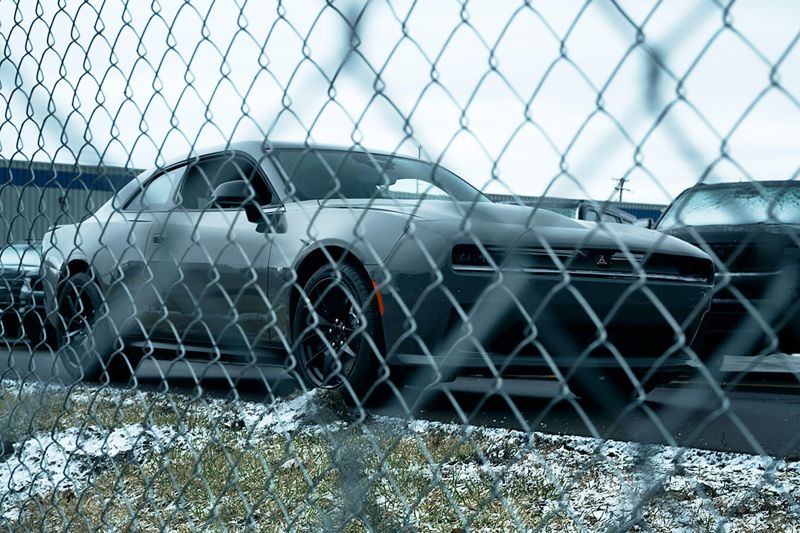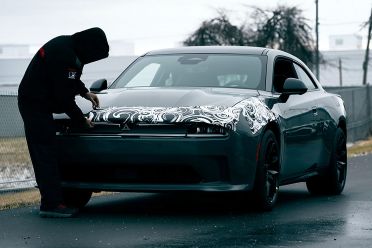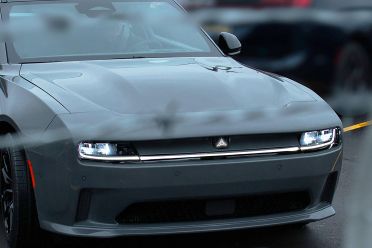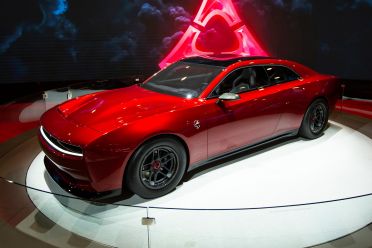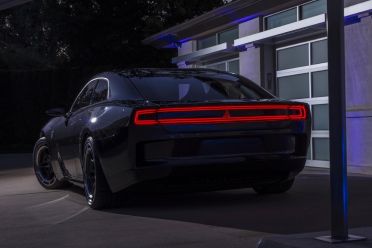The exterior of the next-generation Dodge Charger has been revealed by the firm ahead of the muscle car’s rebirth later this year.
Overnight Dodge took to Instagram to publish some undisguised photos of a new “pre-production model” that will be available in the US from late 2024.
This as-yet unnamed car looks a lot like the 2022 Dodge Charger SRT Daytona EV concept, but there are some subtle changes.
As expected, the pre-production vehicle — likely to wear the Charger name even though it effectively replaces the Challenger — features much larger wing mirrors, visible recessed door handles, side marker lights on the trailing edges of the wheel arches, and low-profile road tyres with a plainer wheel design.
Compared to the Charger that just ended production, the new model sports two fewer doors, and will be sold without petrol-fuelled drivetrains, at least to start with.
Under the skin, the new Charger will ride on the STLA Large architecture.
Although the platform is designed with the needs of electric vehicles (EVs) in mind, it can also support internal combustion engines, which has lead to plenty of rumour and speculation the Charger will be offered with the company’s twin-turbo Hurricane straight-six engine.
This chatter wasn’t tamped down when Dodge CEO Tim Kuniskis told The Drive: “I can put an ICE engine in it. It doesn’t mean we’re going to. We’re certainly not launching with anything like that. We’re launching full battery electric.”
At the launch of the Charger Daytona concept, Dodge hinted the production version would be available with a selection of electric powertrains.
The base model would have a 400V electrical system and system output of 340kW, with eStage 1 and eStage 2 upgrades that boost power to 370kW and 400kW, respectively.
There would also be a 440kW variant using the same 400V electrical system, which would sport eStage 1 and eStage 2 upgrades that boost power to 470kW and 500kW, respectively.
An 800V electric system would also be available, and power on cars running this setup would likely top out at around 660kW.
Batteries between 101kWh and 118kWh would be used, allowing for up to 800km of driving between charges.

